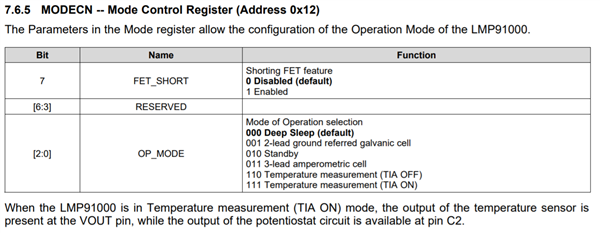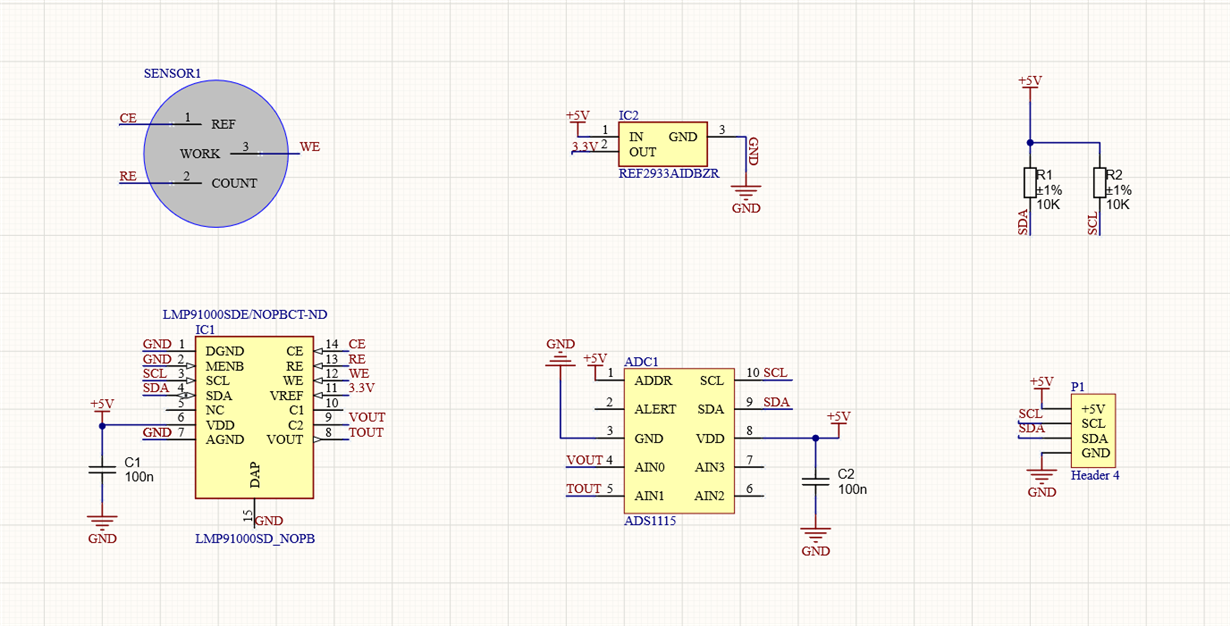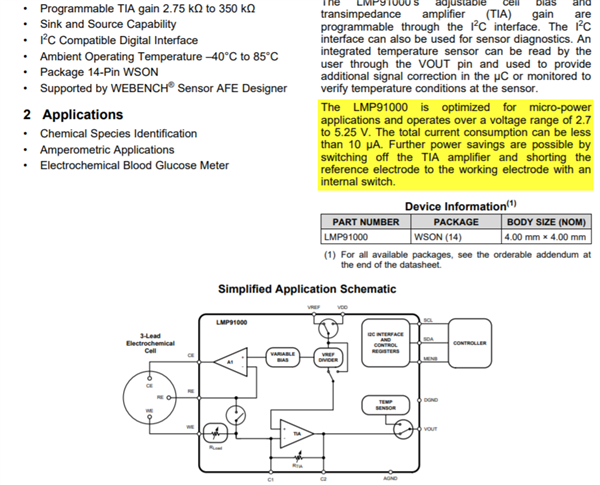Hello everyone,
I am using the LMP91000 for oxygen measurement and we need to use the standby mode for lower power consumption, this mode gives us the opportunity to keep the sensor biased when other parts of the IC are off. My problem comes when we switch from standby mode to temperature measurement mode (tia on). We were hoping to have immediate correct values from our sensor. However, we have seen that the sensor takes some time to warm up properly.
After applying standby for 30 seconds, the sensor needs another 30 seconds to give the correct output value, which is meaningless if bias has been applied during standby. Is this performance usual or not?




